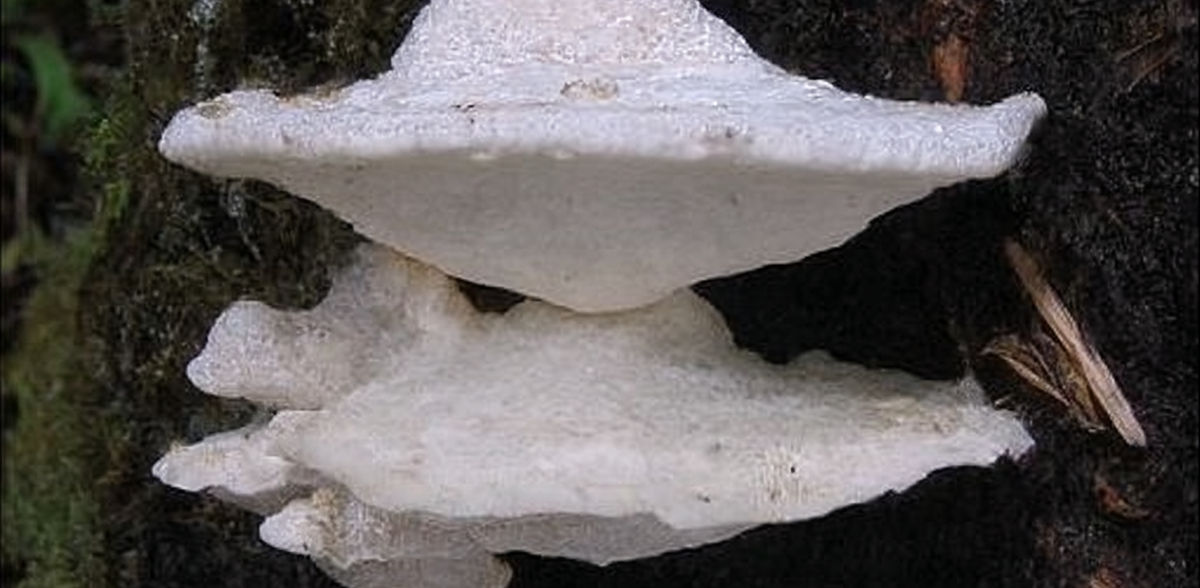New highly effective bitter compound identified
Mushroom study expands knowledge of natural bitter compounds
A joint press release of the Leibniz Institute for Food systems biology at the Technical University of Munich and the Leibniz Institute of Plant Biochemistry

Dr. Maik Behrens in his office
G. Olias / Leibniz-LSB@TUM
Freising, April 7, 2025 – The molecular world of bitter compounds has so far only been partially explored. Researchers at the Leibniz Institute for Food Systems Biology at the Technical University of Munich in Freising and the Leibniz Institute of Plant Biochemistry in Halle (Saale) have now isolated three new bitter compounds from the mushroom Amaropostia stiptica and investigated their effect on human bitter taste receptors. In doing so, they discovered one of the potentially most bitter substances known to date. The study results expand our knowledge of natural bitter compounds and their receptors, thus making an important contribution to food and health research.
The BitterDB database currently contains over 2,400 bitter molecules. For about 800 of these chemically very diverse substances, at least one bitter taste receptor is specified. However, the bitter compounds recorded are mainly from flowering plants or synthetic sources. Bitter compounds of animal, bacterial or fungal origin, on the other hand, are still rarely represented in the database.
Researchers assume that bitter taste receptors have developed to warn against the consumption of potentially harmful substances. However, not all bitter compounds are toxic or harmful, and not every toxin tastes bitter, as the example of the death cap mushroom toxin shows. But why is that the case? Studies have also shown that the sensors for bitter substances are not only found in the mouth, but also in organs such as the stomach, intestines, heart and lungs, as well as on certain blood cells. Since we do not “taste” with these organs and cells, the question arises as to the physiological significance of the receptors there.
Comprehensive data collections as a research basis
“Comprehensive data collections on bitter compounds and their receptors could help us to find answers to these open questions,” says Maik Behrens, who heads a research group at the Leibniz Institute in Freising. “The more well-founded data we have on the various bitter compound classes, taste receptor types and variants, the better we can develop predictive models using systems biology methods to identify new bitter compounds and predict bitter taste receptor-mediated effects. This applies to both food constituents and endogenous substances that activate extraoral bitter taste receptors.”
The team led by Maik Behrens and Norbert Arnold from the Institute in Halle (Saale) has therefore examined the Bitter Bracket (Amaropostia stiptica) as part of a collaborative project funded by the Leibniz Research Alliance “Bioactive compounds and Biotechnology”. The mushroom is non-toxic, but tastes extremely bitter.
Highly effective bitter substance identified
Using modern analytical methods, the research group led by Norbert Arnold has succeeded in isolating three previously unknown compounds and elucidating their structures. Using a cellular test system, the researchers in Freising then showed that the compounds activate at least one of the approximately 25 human bitter taste receptor types. Particularly noteworthy is the newly discovered bitter compound oligoporin D, which stimulates the bitter taste receptor type TAS2R46 even at the lowest concentrations (approx. 63 millionths of a gram/liter). To illustrate: the concentration corresponds to one gram of oligoporin D dissolved in about 106 bathtubs of water, where one gram corresponds approximately to the weight of a knife tip of baking soda.
“Our results contribute to expanding our knowledge of the molecular diversity and mode of action of natural bitter compounds,” explains Maik Behrens, adding: ”In the long term, insights in this area could enable new applications in food and health research, for example in the development of sensorially appealing foods that positively influence digestion and satiety.”
Original publication
Lea M. Schmitz, Tatjana Lang, Alexandra Steuer, Luisa Koppelmann, Antonella Di Pizio, Norbert Arnold, Maik Behrens; "Taste-Guided Isolation of Bitter Compounds from the Mushroom Amaropostia stiptica Activates a Subset of Human Bitter Taste Receptors"; Journal of Agricultural and Food Chemistry, Volume 73, 2025-2-13






























































